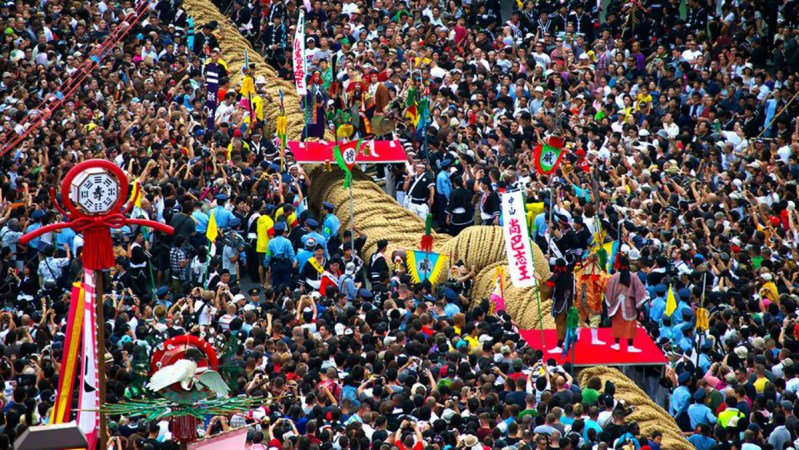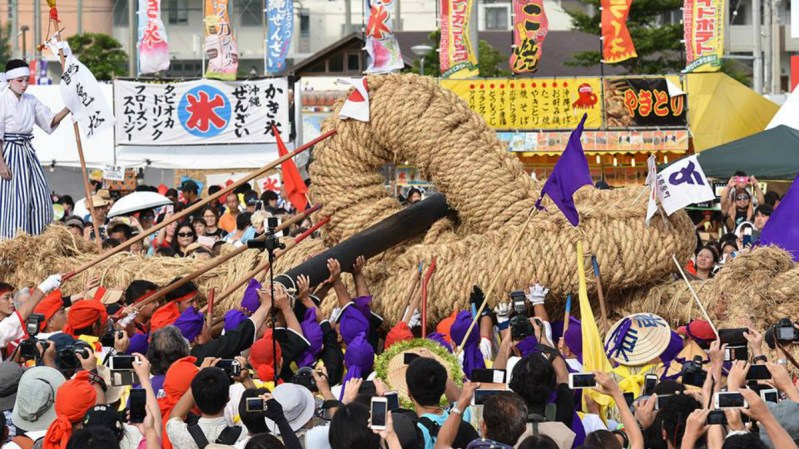
Organic chemistry, the quadratic formula, dodgeball — all skills honed (or not) in school that most of us have never applied to our daily adult lives. Visitors to Japan can now put one of those “useless” gym class skills to good use: tug-of-war.
Okinawa is home to the world’s largest, most outlandish tug-of-war competitions, simply dubbed “The Great Tugs-of-War.” The events take place every year between June and August of the lunar calendar (that’s July through early October on the Gregorian calendar). Most date back several centuries and all were traditionally designed to foster the Okinawan spirit of yuimaaru (cooperation). They bring locals together to pray for a better harvest, good rain, reliable fish catches; to ward off evil spirits; or some combination of all of the above. Every event is colored with the surrounding region’s local culture and flare. A ceremonial parade precedes most events with fan dancing, martial arts demonstrations, and more.

No matter the event, the physical rope is similar. The ozuna (the eastern-facing rope representing “male”) is connected with the mezuna (the western-facing female rope) by the kanachibo (“bo” means bar or stick in Japanese). Because the main rope is five feet in diameter, “tuggers” must instead pull on smaller auxiliary ropes. Whichever side pulls more of the rope in their direction in the time allotted is declared the victor. Most participants take away small pieces of the rope for good luck in the coming year.
The most significant events include the Itoman Great Tug-of-War, the Yonaburu Tug-of-War Festival, and the Naha Great Tug-of-War. The last of these three is Japan’s largest and most historical.
It began as a massive celebration around the mid-15th century and has changed little since. It was relaunched and rebranded in 1971 to celebrate the Okinawan capital Naha City’s 50th anniversary. Every year, attendees join the celebration to pray for a good year ahead. This can include everything from fertility blessings and financial success to world peace and good health. It’s also, of course, a great way to draw tourists.
Guinness World Records certified the 1995 Naha Great Tug-of-War as the world’s largest ever tug-of-war. By the numbers, more than 270,000 people attended including 15,000 active participants on each side. All were vying over a 200-meter (656-foot) rope that weighed a staggering 43 tons.
Attending the annual Naha Great Tug-of-War Festival (Japanese language site) is free. Plan to arrive very early as there are far more people looking to tug than there is physical space along the rope.


